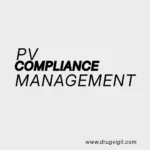This blog covers the following topics:
- Objectives of a Quality Management System (QMS)
- Steps to Design an Effective QMS
- Guidelines for Choosing the Right QMS for Your Process
Table of Contents
Introduction
The necessity of a Quality Management System (QMS) is emphasized by international standards such as ISO, which mandate that every process within an organization should ensure quality from the top level of management down to operational execution. A well-structured QMS provides the foundation for consistency, compliance, and continuous improvement across all functions.
In our earlier discussion on the **[[Quality Management System in Pharmacovigilance|QMS]] we explored the basic principles and the significance of implementing such a system within regulated environments. In this section, we will delve deeper into the core objectives and intent behind establishing a QMS.
Objectives of a Quality Management System (QMS)
The objectives of a QMS extend far beyond the mere adoption of a software platform or digital tool. A true QMS is not defined by the system you use, but by the efficiency, reliability, and quality of outcomes it enables. Its ultimate purpose is to ensure that every product, process, and service meets predefined quality standards while fostering a culture of accountability and continual improvement.
A well-implemented QMS aims to:
- Ensure Consistency: Establish uniform procedures that minimize variability and human error.
- Promote Compliance: Align organizational practices with applicable regulatory and industry standards.
- Enhance Customer Satisfaction: Deliver outputs that consistently meet or exceed customer and stakeholder expectations.
- Facilitate Continuous Improvement: Encourage systematic review, feedback, and optimization of processes.
- Strengthen Risk Management: Identify, assess, and mitigate risks that could compromise quality or safety.
In essence, the main objective of a QMS is to achieve and sustain high-quality outcomes. The quality of results is a reflection not only of the system’s structure but also of the organization’s commitment to applying its principles effectively throughout every stage of operation.
“A Quality Management System isn’t just about meeting standards — it’s about creating a culture where excellence becomes the standard.”
How to Design a QMS
Many companies and professionals believe that adopting expensive, high-end software solutions is the only way to achieve efficiency and quality in their processes. However, this is a misconception.
In the earlier stages of my experience, I too thought that a QMS was merely a collection of different SOPs created for quality purposes. But after exploring and understanding it in depth, I realized what it truly represents. I’m sure many others may have had a similar thought.
A Quality Management System should be designed as a set of interconnected systems supported by well-defined processes and good practices that consistently produce the expected quality outcomes.
Here, I will explain the concept in a simple and practical way for everyone to understand.
Establishing a QMS is not just a good business practice—it is also a regulatory requirement. Agencies such as the USFDA, EMA, MFDS, and others have issued guidelines under GxP (Good Practice) frameworks to ensure that organizations maintain effective quality systems.
According to ISO 9001:2015,“…documented information required by the quality management system shall be controlled to ensure:
▪ Information is available and suitable for use, where and when it is needed;
▪ Information is adequately protected (e.g., from loss of confidentiality, improper use, or from indiscriminate changes or loss of integrity).”
Must-Have Features of a QMS
You can design and structure a Quality Management System (QMS) to suit any organization—regardless of its size or the tools used. However, there are certain essential features that every effective QMS must include:
- Document Control and Version Management:
All documents should be properly controlled with version tracking to ensure accuracy, traceability, and compliance. - Integrated Workflows:
The QMS should include defined workflows that involve all personnel responsible for maintaining, approving, and implementing quality processes. - Training Control:
The system must track and manage employee training, ensuring that only qualified individuals perform assigned tasks. - Robust Security:
A QMS must have strong security controls to protect sensitive information from unauthorized access or manipulation. - Data Protection:
Measures should be in place to prevent data leaks, ensuring the confidentiality and integrity of all quality-related records. - Equipment and Inventory Management:
The QMS should include mechanisms to manage equipment calibration, maintenance, and inventory tracking effectively. - Process-Oriented Workflows:
Each workflow should clearly define responsibilities and actions for individuals involved in different quality-related tasks. - 21 CFR Part 11 Compliance:
For regulated industries, the system must comply with electronic record and signature requirements as per FDA 21 CFR Part 11. - Remote Accessibility:
The QMS should be deployable and manageable from any location, supporting modern remote or hybrid work models. - Comprehensive Audit Trail:
Every action, modification, or approval within the system must be recorded to maintain full traceability. - User-Friendly Interface:
The system should be intuitive, easy to navigate, and clearly guide users through each process step. - RCA, CAPA, and Audit Management:
The QMS must support effective handling of Root Cause Analysis (RCA), Corrective and Preventive Actions (CAPA), and internal/external audit documentation. - Complete Record Management:
Every action, even minor events like returns or deviations, should be properly logged and maintained within the system.
A QMS should continuously analyze internal quality performance, identifying where errors occur, where improvements are needed, and how progress can be achieved. It must be diligently maintained, as it plays a crucial role during internal reviews and external regulatory audits.
Expected Result
The ultimate goal of a Quality Management System (QMS) is to achieve and sustain quality. However, quality should not be viewed solely as the outcome of a product or the service delivered—it encompasses every aspect of the organization’s operations.
True quality is reflected in how well an organization manages its maintenance activities, document control and archiving, data protection, system security, CAPA processes, and overall compliance practices. Each of these components directly or indirectly influences the final quality of the product or service.
During audits, regulators and auditors assess not only the end results but also the processes and controls that lead to them. This means that QMS effectiveness is evaluated across all checkpoints, from documentation and data integrity to training and risk management.
In essence, a QMS can be described as a comprehensive framework of checkpoints, quality controls, and quality alerts—all working together to ensure that every process consistently contributes to the delivery of reliable, compliant, and high-quality outcomes.
Key Takeaways
QMS is a system of actions, not just tools. True quality comes from how processes are implemented and managed, not from the software or platform used.
QMS goes beyond documents and SOPs. It focuses on achieving consistent quality outcomes through effective practices and continuous improvement.
QMS requires adaptability. It should evolve with process changes, strategy updates, and regular evaluation to identify and address problem areas.
Documentation control is essential. All documents must be properly maintained, versioned, and reviewed to ensure accuracy and compliance.
QMS is critical during audits. It deserves focused attention, as auditors assess not only outputs but also how quality is managed and sustained within the system.
Are you encountering quality issues?
Building a strong Quality Management System is the first step toward regulatory confidence and patient trust.
Let Drugvigil help you simplify pharmacovigilance with expert support, end-to-end solutions, and a deep focus on quality at every level.
Let Drugvigil take care of it – because quality in safety is never optional.
Conclusion
This comprehensive article aims to simplify the often confusing concept of a Quality Management System (QMS). For beginners or first-time entrepreneurs, understanding QMS can initially seem overwhelming. However, it plays a vital role in every healthcare-related business and is an essential part of ensuring consistency, compliance, and continual improvement.
While implementing a QMS may appear challenging at first, it is neither overly complex nor impossible to integrate into your business operations. With the right understanding and structured approach, it becomes a practical and achievable process.
In our upcoming articles, we will guide you further on the tools and methods that can help you implement a QMS effectively within your organization. We hope this article has helped you gain a clear and simplified understanding of what QMS truly means.
Please share this content widely—it may benefit entrepreneurs and newcomers to the field of pharmacovigilance who are still trying to understand what a QMS is. Feel free to leave your comments if we have missed anything or if you have suggestions to make this article even better.







Leave a Reply